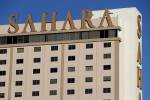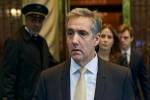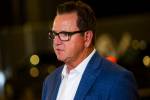EDITORIAL: Virus devastating public pension plans
The White House last week laid out its guidelines for states to gradually reopen their economies. The proposal leaves it up to individual governors to decide when and how to proceed. Different regions of the country will begin the transition sooner than areas that have been hardest hit.
Gov. Steve Sisolak promises to have something to say on the issue this week. The sooner the better. But individual risk tolerance will drive the process more than government edict, drawing out the economic carnage well into the future and creating additional uncertainty for entrepreneurs and employers. Governments will also have financial problems to address that go beyond their bleeding annual budgets.
In addition to damming up tax revenues, the pandemic has exacerbated another not-so-obvious problem that increasingly threatens the fiscal stability of governments across the country: their teetering public pension plans.
“Moody’s Investor Service estimates the stock market sell off vaporized $1 trillion of value from public pension portfolios,” The Washington Post reported Friday, “or about 21 percent of the assets that pay for the retirement plans of state and local employees.”
An April 1 Bloomberg News report put it this way: “Although the (public pension) problem has been growing for decades, the virus may have pushed it over the edge.”
The stock market has stabilized somewhat in recent days, but plenty of damage has already been done to systems that were already stressed by exorbitant promises, overzealous projections and insufficient contributions. Expect a mandatory increase in how much public entities — read: the taxpayers — pay for employee retirement contributions.
The Public Employees’ Retirement System of Nevada requires hefty payments from local government. For regular employees, the rate is 29.25 percent of base pay. For police and fire employees, it’s 42.5 percent. If a firefighter makes $100,000 in base pay, his or her employer sends $42,500 to PERS — every year. Employees split the contribution through salary reductions or reduced pay increases.
PERS invests this money into stocks and bonds. In theory, the contributions and investment earnings will produce enough money to pay for each employee’s future retirement. In reality, Nevada offers such generous pension benefits that the system has been underfunded for decades.
A 2019 study by Segal Consulting determined that PERS was only 75.3 percent funded and had an unfunded liability of $14.3 billion. Keep in mind that this staggering deficit exists even after one of the greatest bull markets in American history.
Attempting to pay off past debt, PERS sent contribution rates skyrocketing. In 2010, the contribution rate for regular employees was 21.5 percent. It’s gone up four times in the past decade, a 36 percent increase. For police and fire employees in 2010, the rate was 37 percent. It has gone up three times and is 15 percent higher than a decade ago.
Barring a miraculous market recovery, PERS will likely determine later this year that it once again must increase contribution rates to cover future costs. Those contribution rates would go into effect in July 2021. Local governments, including school districts, probably will still be dealing with the fallout of this downturn. And it’s worth remembering that the public and even current employees wouldn’t get any benefit from higher PERS payments. The extra money would go to pay off debt that PERS and politicians didn’t properly account for at the time.
As of last week, the S&P 500 is down more than 6 percent since July 1, 2019, the start of PERS fiscal year. That’s a long way from the assumed 7.5 percent annual gain. PERS aims to have 42 percent of its investments in an S&P 500 index fund. It invests 18 percent of its money in international stocks, which are also down.
There is a better way. Lawmakers need to transition PERS from a defined benefit plan to a hybrid system that includes individual retirement accounts and less liability for taxpayers. The financial fallout from the coronavirus shutdown makes such reform even more urgent during the 2021 legislative session.





























